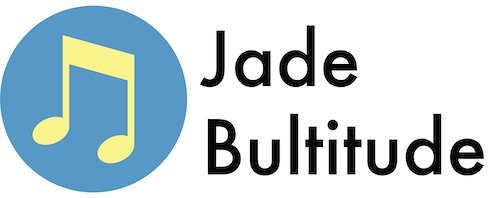In this article you’ll learn how to construct the D flat triad as well as how to play it on piano and guitar.
We’ve also included sections on inversions for those that want a deeper understanding. Lastly, listen to some examples of popular songs that featured this triad.
Root , 3rd and 5th
The D flat minor triad is formed of the 1st, flat 3rd and flat 5th of the D flat major scale.
- Db – root note
- Fb – minor 3rd above the root
- Ab – perfect 5th above the root
Here is the triad written on the stave in the treble and bass clef.


Before you read on make sure that you have a basic understanding of intervals. Intervals are vital for understanding how triads are built. Check out our guide to major, minor and perfect intervals for more on this.
D flat Minor Triad on Piano
Below you can see how to play this triad on the keyboard or piano. This pattern of notes could also be played starting on any D flat note.
However, the order of the notes must be the same:
- D flat – lowest note
- F flat – middle note
- A flat – highest note
This is called ‘root position’.
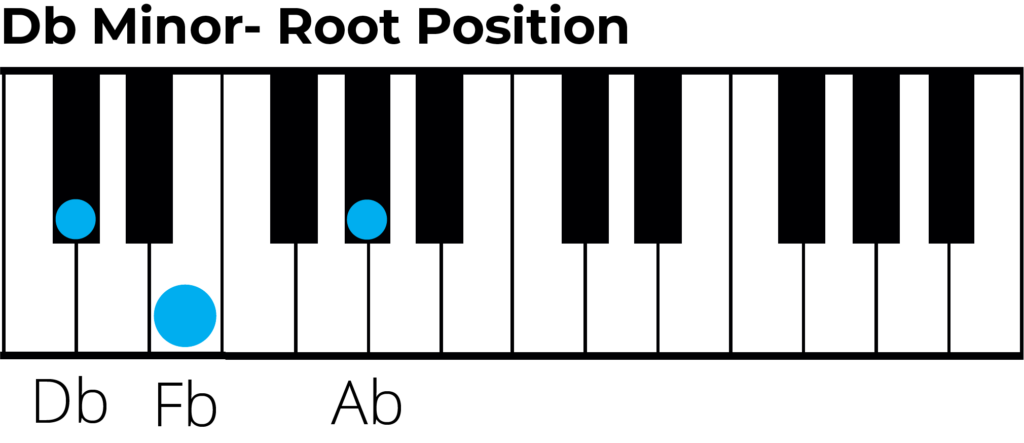
Db Minor Triad on Guitar
There are two simple positions that you can use to play a Db minor triad on guitar. Both positions can also be slide up or down the neck to play different minor triads.
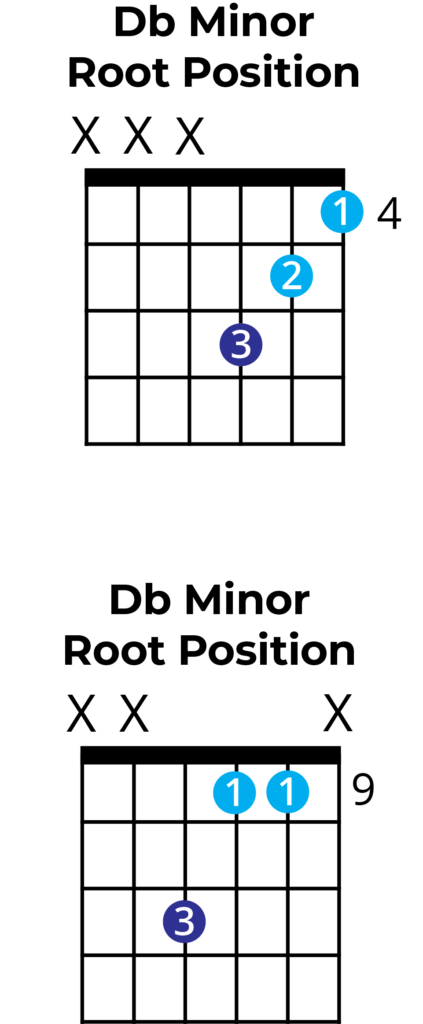
1st Inversion
A 1st inversion is where we take a triad but we start on the second note, which in this case is Fb natural. We still keep the Ab above, but then the D flat (or root) become the highest note.
This way of rearranging a triad gives us a different sound as the relative pitches of the three notes has changed.
- F flat – lowest note
- A flat – middle note
- D flat – highest note

1st inversion on Piano
On the piano we can play the 1st inversion of a Db Minor triad by starting on an Fb. They play the Ab above and the D flat above this.
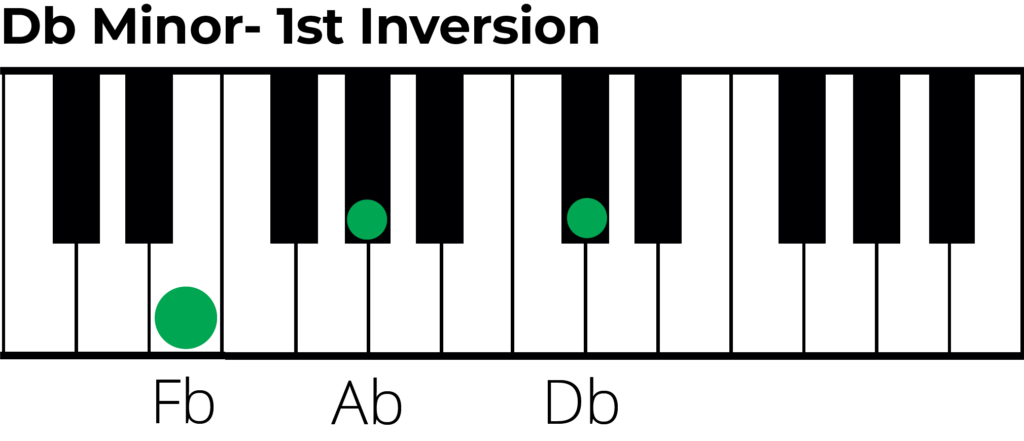
1st Inversion on Guitar
Below are the most common shapes for playing a Db minor chord in the 1st inversion. Remember that we can only use certain shapes are the pitches of the three notes are important.
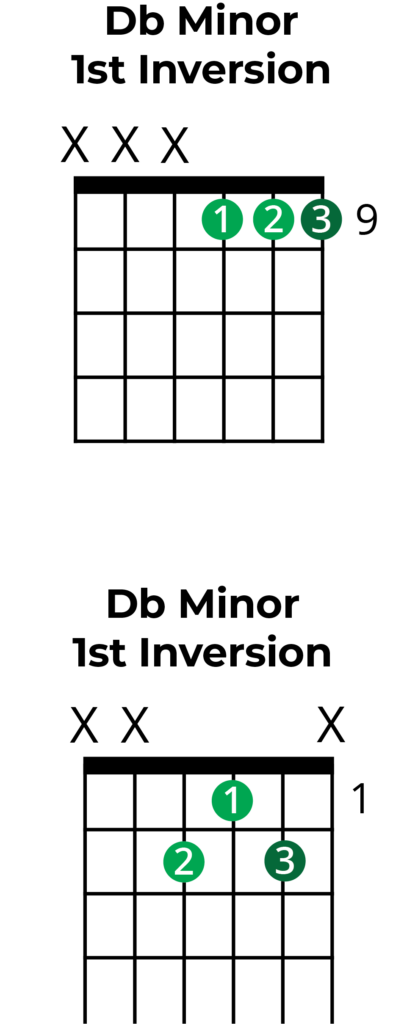
2nd Inversion
A 2nd inversion is where we take a triad but we start on the third note, which in this case is A flat. We still keep the D flat above this as we did from the 1st inversion. Then the Fb becomes the highest note in the chord.
- Ab – perfect 5th (lowest note)
- Db – root note (middle note)
- Fb – minor 3rd (highest note)
We could construct a 2nd inversion starting on any A flat note in any octave. The only thing that must stay the same is that the we use the D flat above and the Fb above that.

2nd inversion on Piano
On the piano we can play the 2nd inversion of a Db Minor triad by starting on a Ab. They play the D flat above and the Fb above this.
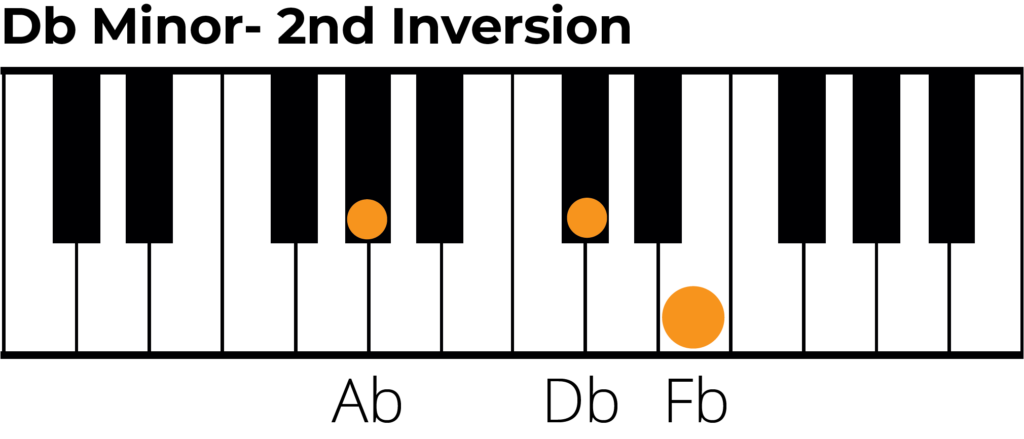
2nd Inversion on Guitar
Below are the most common shapes for playing a D flat minor chord in the 2nd inversion. Remember that we can only use certain shapes are the pitches of the three notes are important.
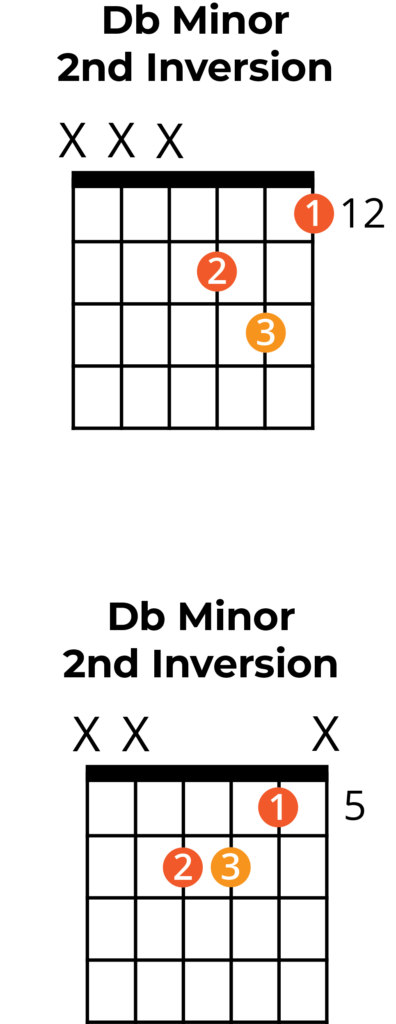
Triads from the D flat Minor Scale
By looking at the D flat Minor scale we can actually make triads built on each note and only using notes from D flat minor. Below you can see a list of each triad we will create be starting on different notes of the scale.
- Db Minor
- Eb Dim
- Fb
- Gb Minor
- Ab Minor
- Bbb Major
- Cb Major

Pieces Songs in D Flat Minor
Due to its very awkward key signature (6 flats and 1 double flat), pieces are rarely written in the key of D flat Major. Composers often use C sharp minor, which is enharmonically equivalent to Db Major.
This being said, D flat Minor has been used on rare occasions. Verdi uses it in the ending of both his operas Rigoletto and La Traviata.
More pieces in D flat minor here.
What’s next….?
- Learn how to construct the D flat Major triad
- Swat up on your chord knowledge with our complete guide to chords.
